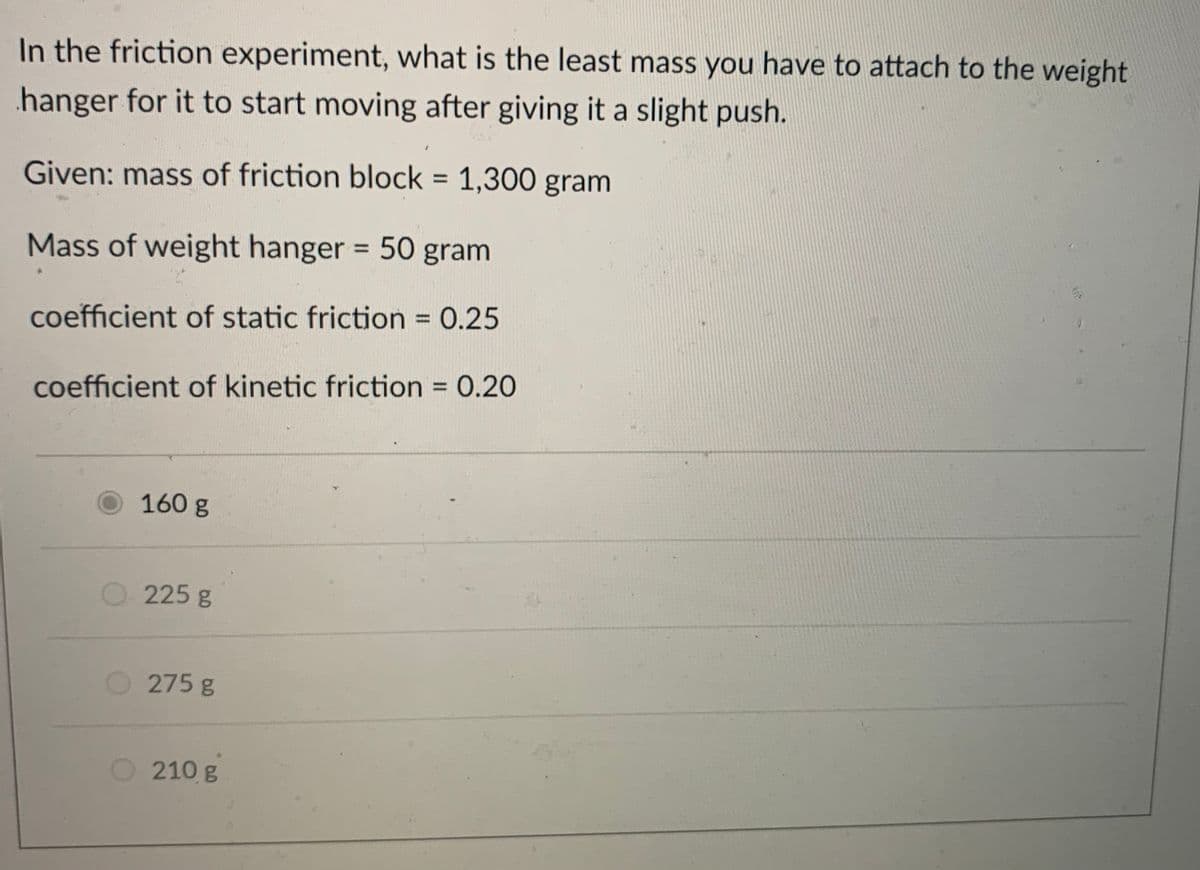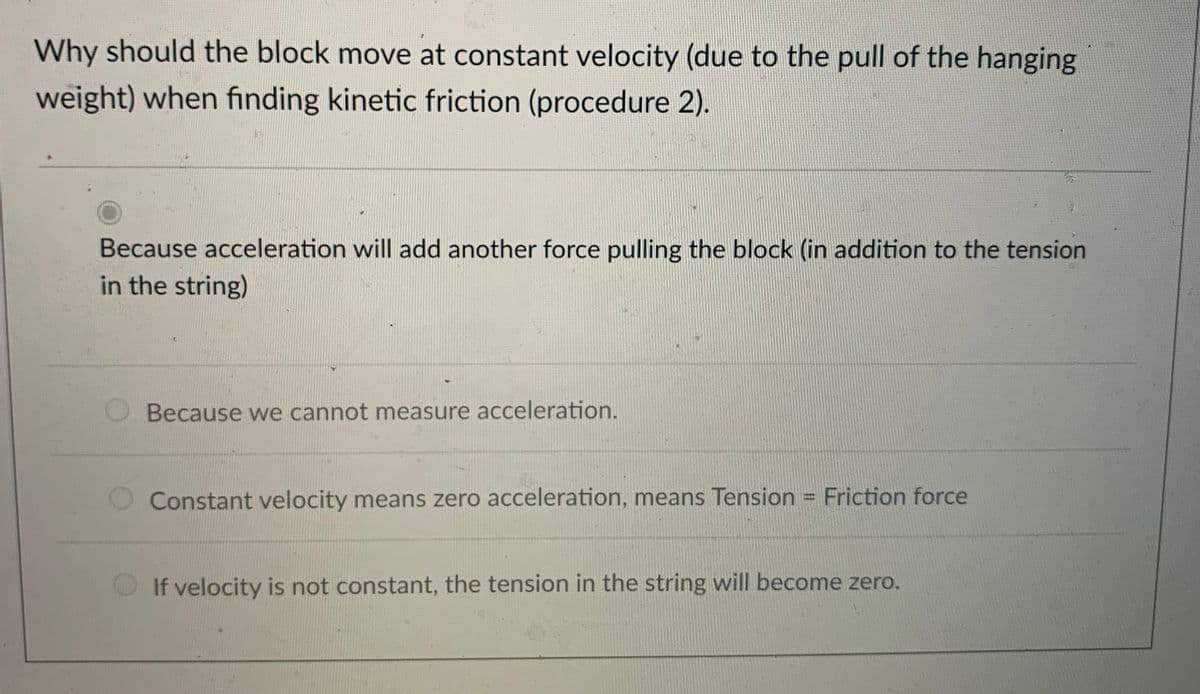In the friction experiment, what is the least mass you have to attach to the weight hanger for it to start moving after giving it a slight push. Given: mass of friction block = 1,300 gram Mass of weight hanger = 50 gram %3! coefficient of static friction = 0.25 %3D coefficient of kinetic friction 0.20 %3D 160 g 225 g 275 g 210 g
In the friction experiment, what is the least mass you have to attach to the weight hanger for it to start moving after giving it a slight push. Given: mass of friction block = 1,300 gram Mass of weight hanger = 50 gram %3! coefficient of static friction = 0.25 %3D coefficient of kinetic friction 0.20 %3D 160 g 225 g 275 g 210 g
University Physics Volume 1
18th Edition
ISBN:9781938168277
Author:William Moebs, Samuel J. Ling, Jeff Sanny
Publisher:William Moebs, Samuel J. Ling, Jeff Sanny
Chapter2: Vectors
Section: Chapter Questions
Problem 40P: A sledge is being pulled by two horses on a flat terrain. The net force on the sledge can be...
Related questions
Question

Transcribed Image Text:In the friction experiment, what is the least mass you have to attach to the weight
hanger for it to start moving after giving it a slight push.
Given: mass of friction block = 1,300 gram
%3D
Mass of weight hanger = 50 gram
%3D
coefficient of static friction 0.25
coefficient of kinetic friction = 0.20
160 g
O 225 g
275 g
210 g

Transcribed Image Text:Why should the block move at constant velocity (due to the pull of the hanging
weight) when finding kinetic friction (procedure 2).
Because acceleration will add another force pulling the block (in addition to the tension
in the string)
Because we cannot measure acceleration.
Constant velocity means zero acceleration, means Tension = Friction force
If velocity is not constant, the tension in the string will become zero.
Expert Solution
This question has been solved!
Explore an expertly crafted, step-by-step solution for a thorough understanding of key concepts.
This is a popular solution!
Trending now
This is a popular solution!
Step by step
Solved in 3 steps

Knowledge Booster
Learn more about
Need a deep-dive on the concept behind this application? Look no further. Learn more about this topic, physics and related others by exploring similar questions and additional content below.Recommended textbooks for you

University Physics Volume 1
Physics
ISBN:
9781938168277
Author:
William Moebs, Samuel J. Ling, Jeff Sanny
Publisher:
OpenStax - Rice University

Classical Dynamics of Particles and Systems
Physics
ISBN:
9780534408961
Author:
Stephen T. Thornton, Jerry B. Marion
Publisher:
Cengage Learning

University Physics Volume 1
Physics
ISBN:
9781938168277
Author:
William Moebs, Samuel J. Ling, Jeff Sanny
Publisher:
OpenStax - Rice University

Classical Dynamics of Particles and Systems
Physics
ISBN:
9780534408961
Author:
Stephen T. Thornton, Jerry B. Marion
Publisher:
Cengage Learning